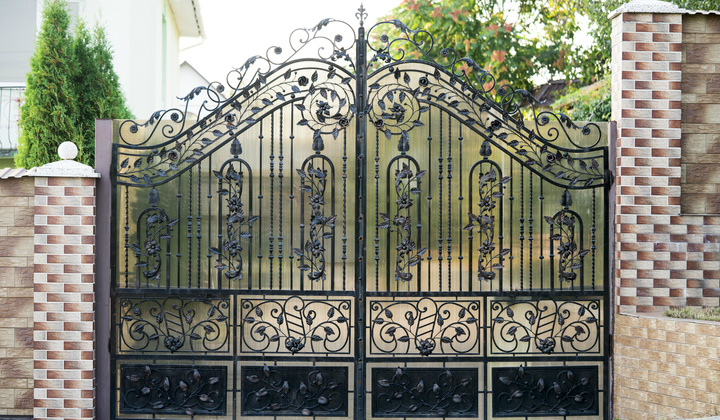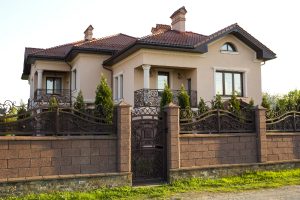
There’s nothing like a gate to restrict who comes onto your property, therefore keeping you, your family, and your belongings safe. The good news is that gate design has progressed by leaps and bounds in the last decade or so. When it comes to how your gate looks, you have at least a dozen options—more so if you choose to go with custom gates.
Custom gates give you full control over your gate’s performance and design. Are you going with one that’s simple and straightforward, or do you want something more elaborate to go with a theme?
But here’s the caveat: gate installation? Not as easy as you’d think.
Even if you aren’t going with a custom piece, you still need to consider several things. So this goes double for homeowners considering custom gates.
Knowing that, here are some of those things you should consider when planning a custom gate design.
Function
Think about the #1 reason you’re installing a gate. Do you want to enhance your property’s curb appeal, increase security and privacy, or both?
Once you know what you want out of your gate, you’ll be able to also think of the gate’s mechanical aspects, like whether it swings or slides open or if it blocks the view of your property.
Homeowner’s Association Guidelines
If you live in a neighborhood with a homeowner’s association, make sure you get in touch with them to find out if they have any restrictions for fences and gates. Some associations will put restrictions on the size, color, or even the width so that all gates look somewhat similar.
While you might be able to get away with a relatively small architectural piece or two on your gate, not adhering to guidelines might mean you’ll have to pay fines, or even replace the gate. Therefore, before you start thinking of potential custom gates, make sure that the design or designs you have in mind won’t violate any associate guidelines, if indeed there are any.
Safety
 It goes without saying that you’ll want the gate you choose to be safe—especially if it opens and closes automatically. You need to consider pets and children in and around your home, as well as think of safety features you may need to ensure everyone is safe. An emergency access box is also something to consider, especially for custom gates without quick access for emergency personnel.
It goes without saying that you’ll want the gate you choose to be safe—especially if it opens and closes automatically. You need to consider pets and children in and around your home, as well as think of safety features you may need to ensure everyone is safe. An emergency access box is also something to consider, especially for custom gates without quick access for emergency personnel.
Accessibility
More and more homeowners are opting for automatic gates since they tend to be more secure. You can take added steps to ensure unwanted people don’t set foot on your property.
Besides deciding between a manual or automatic gate, though, you’ll want to consider whether or not you want a pedestrian gate for those approaching on foot. Whatever you choose in the end, the ease of accessibility is yet another big factor in deciding on a gate design.
Material
Consider how you want the gate to look; its size and weight, how much maintenance it will require, and if you want the design or color to be unique. The material you choose will affect a lot of things.
For instance, it’s important to note that wood isn’t advisable for large gates because of how heavy it is and the ability to increase in weight due to water. Steel is the most common choice, as it’s more durable and easily customized and fabricated. Aluminum may be a good option if you are in a known salt area, like the beach, and therefore worth the extra cost.
Steel and Iron – especially wrought iron – is still more durable and can be worked into a wide array of shapes, making it the better choice for custom gates.
Certain elements like pickets that curve out toward the street and down aren’t just an interesting design element. They can add to your security since they can deter would-be thieves and trespassers.
More homeowners these days are likely to choose custom gates when they can. And who wouldn’t, really? Unique gate designs stand out. They also give you an idea of the homeowner’s taste in decor. Your choice of gate brings you one step closer to making that property truly yours. So, while a custom gate may take a little longer or cost a little more, the investment is worth it in the end.







